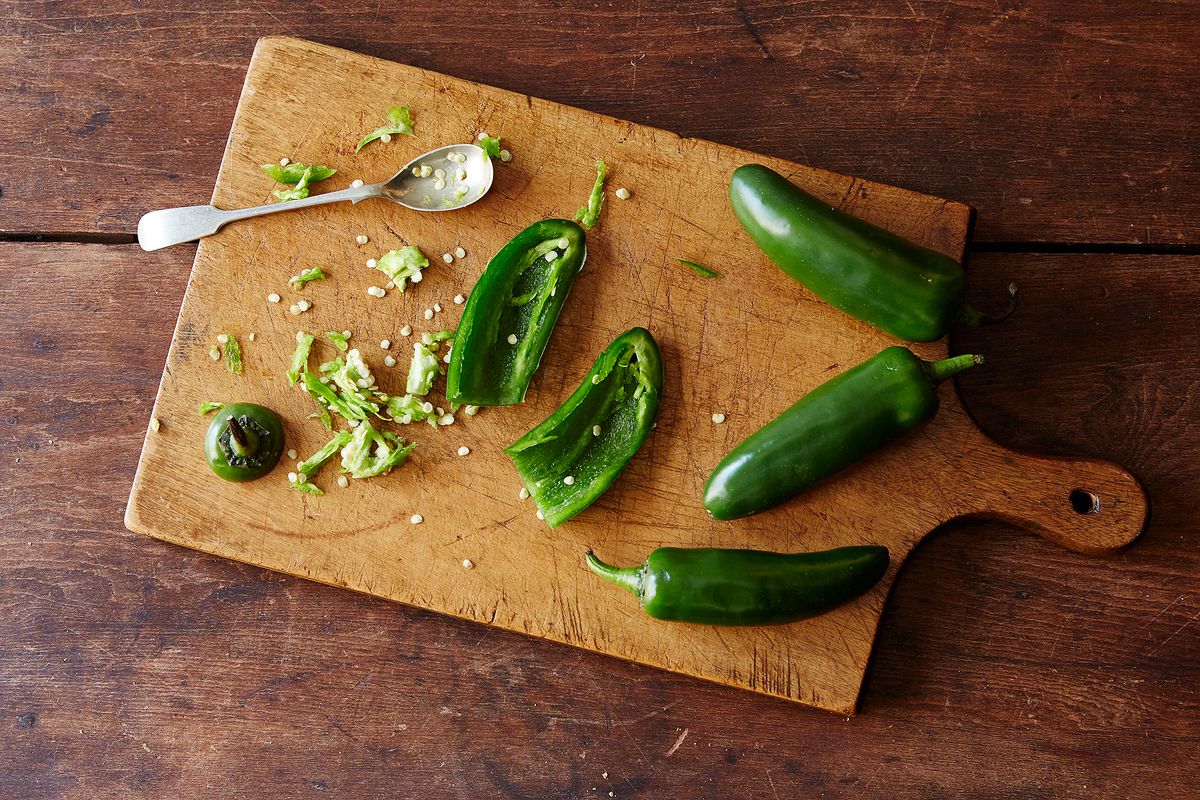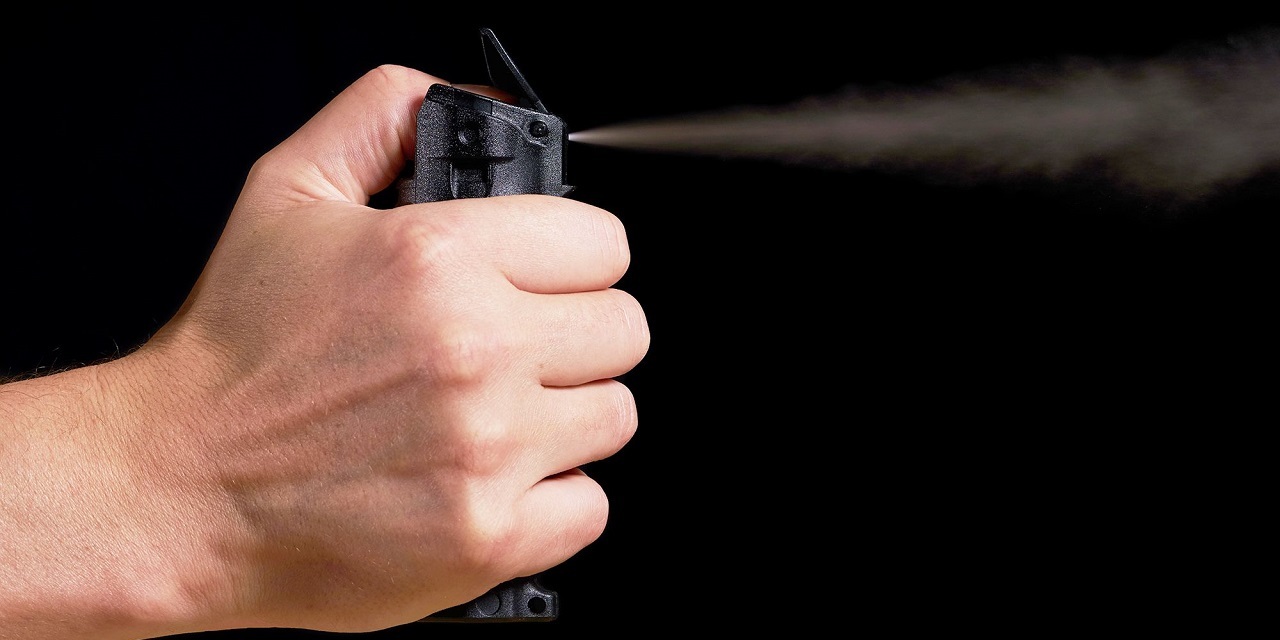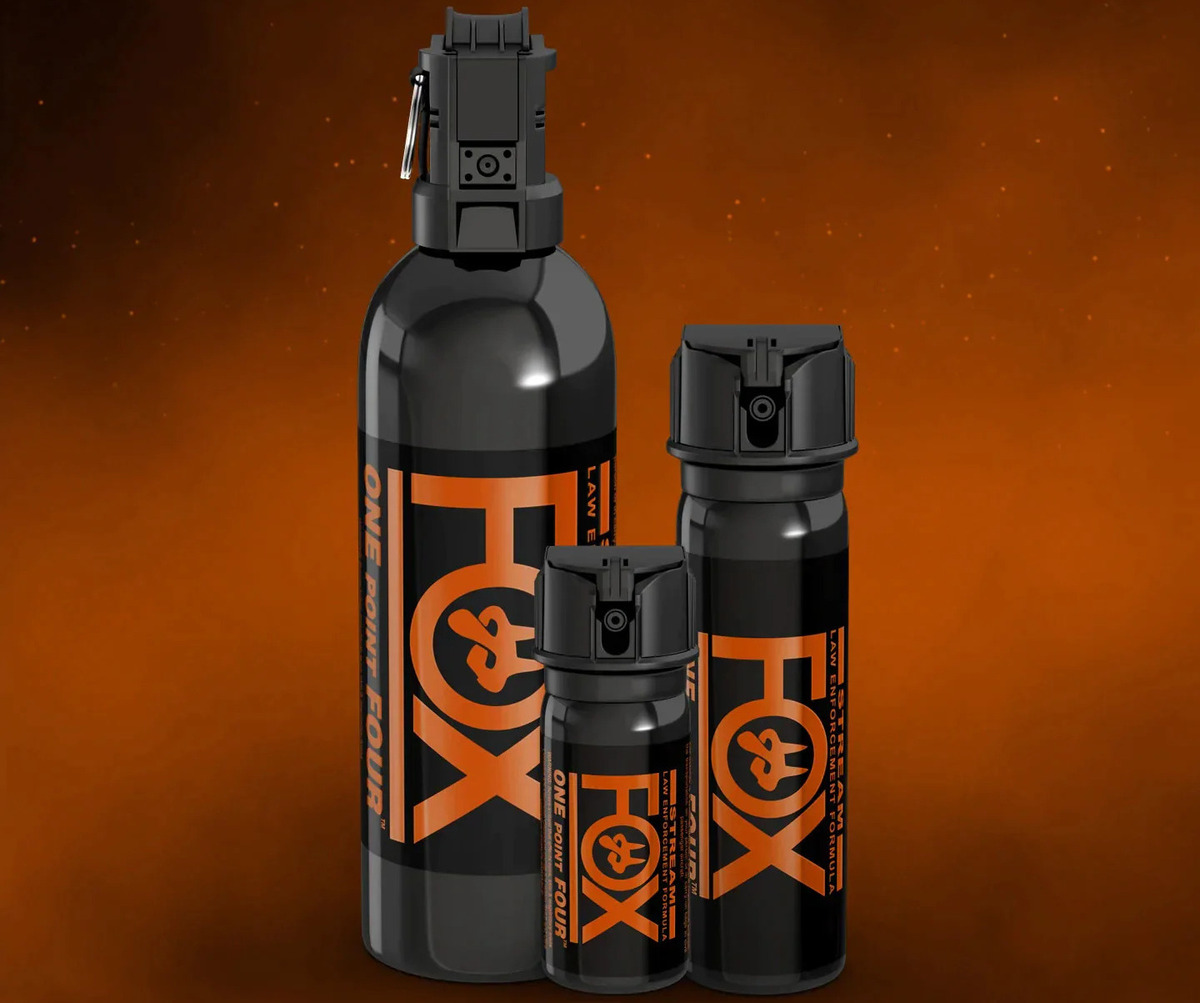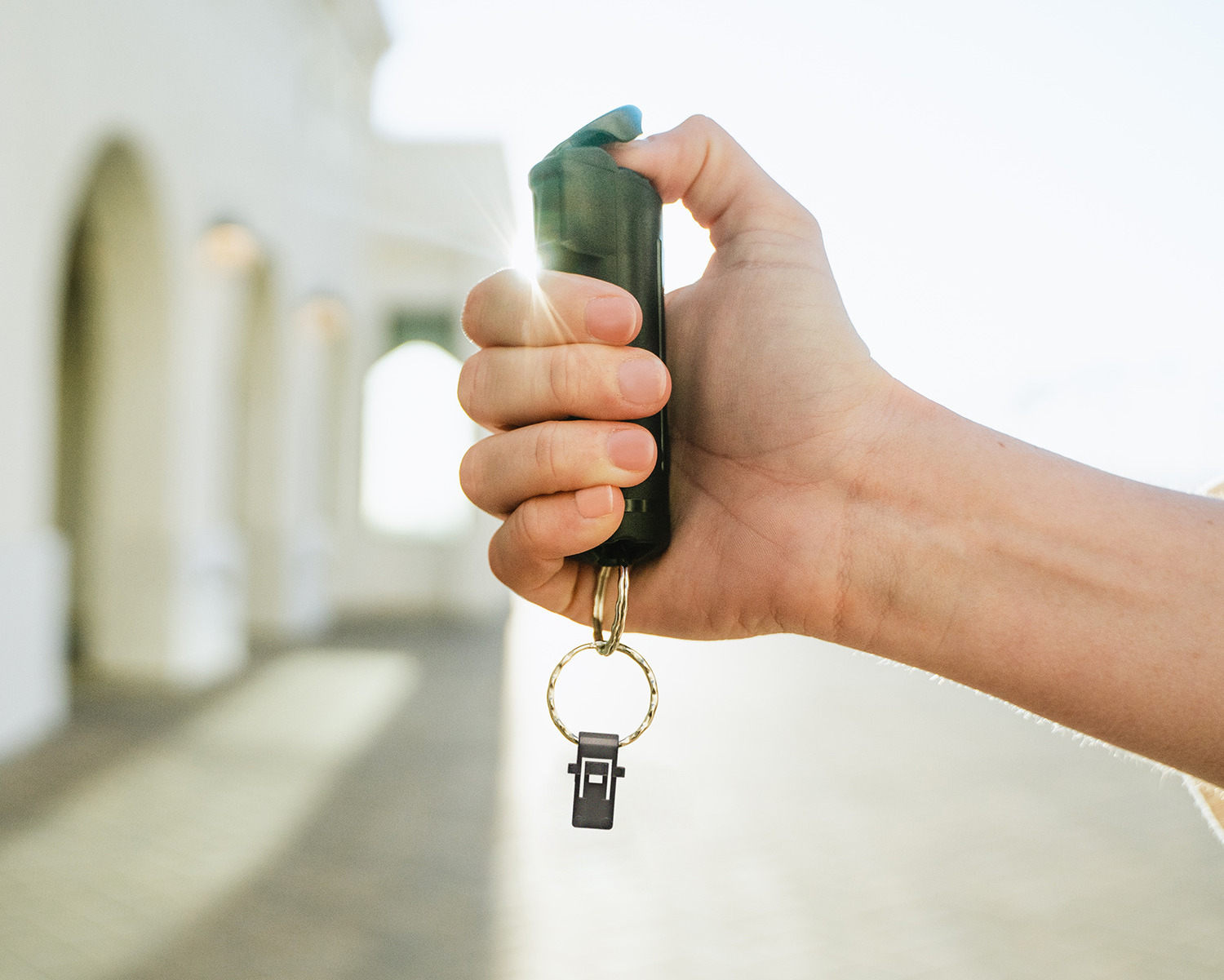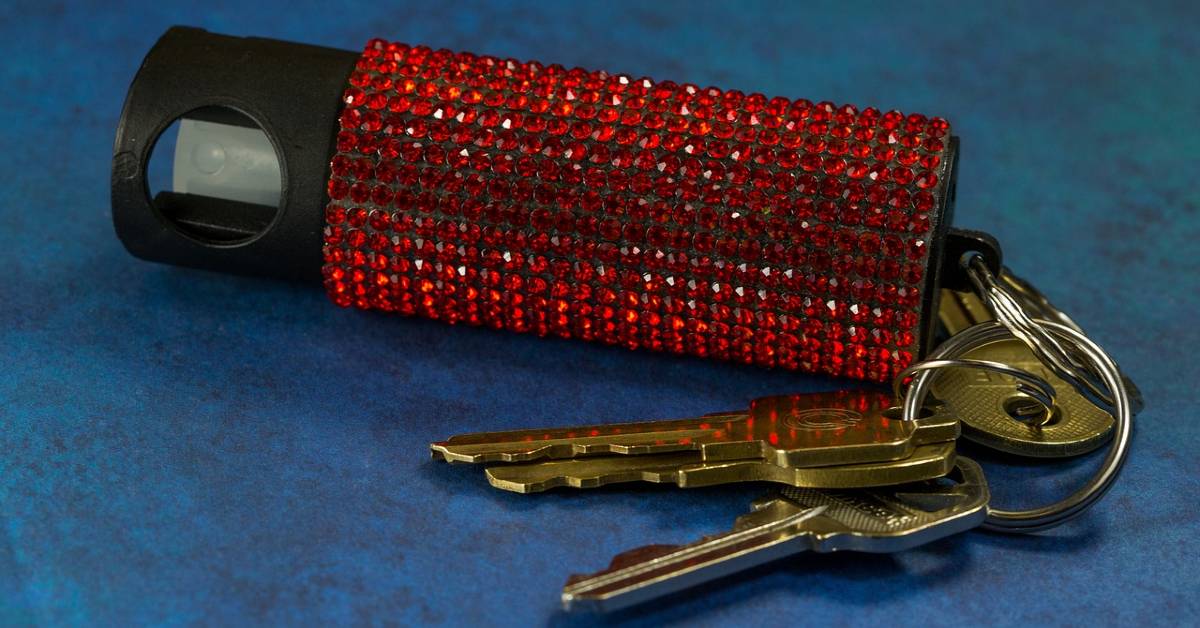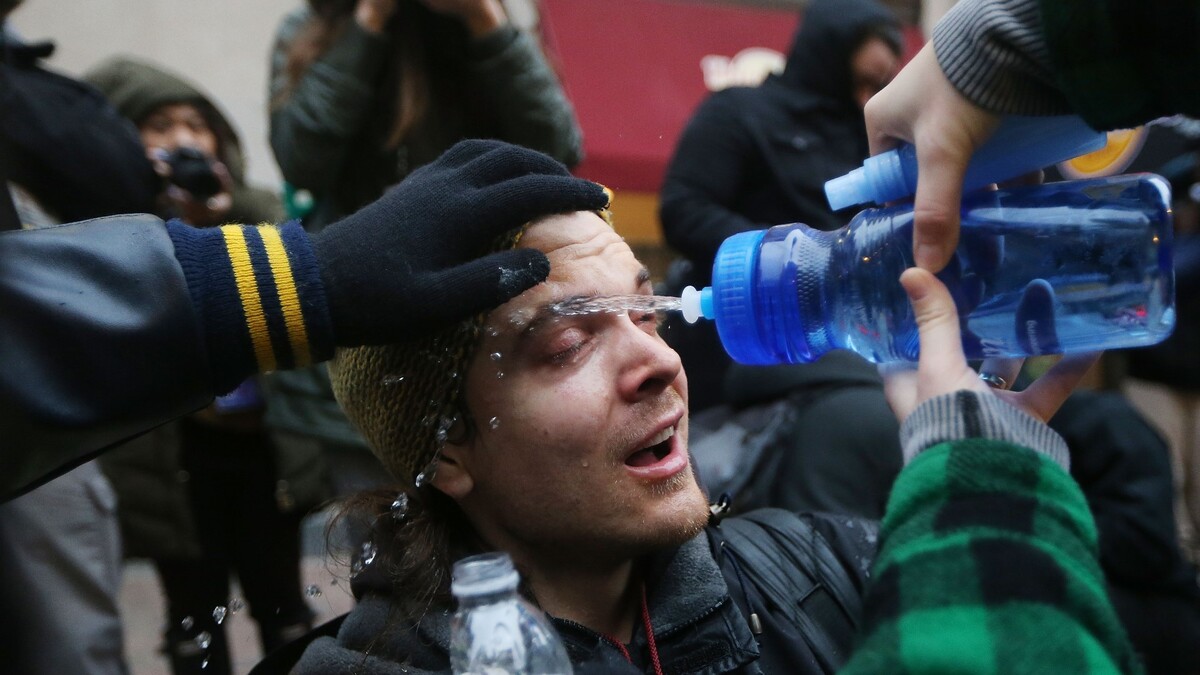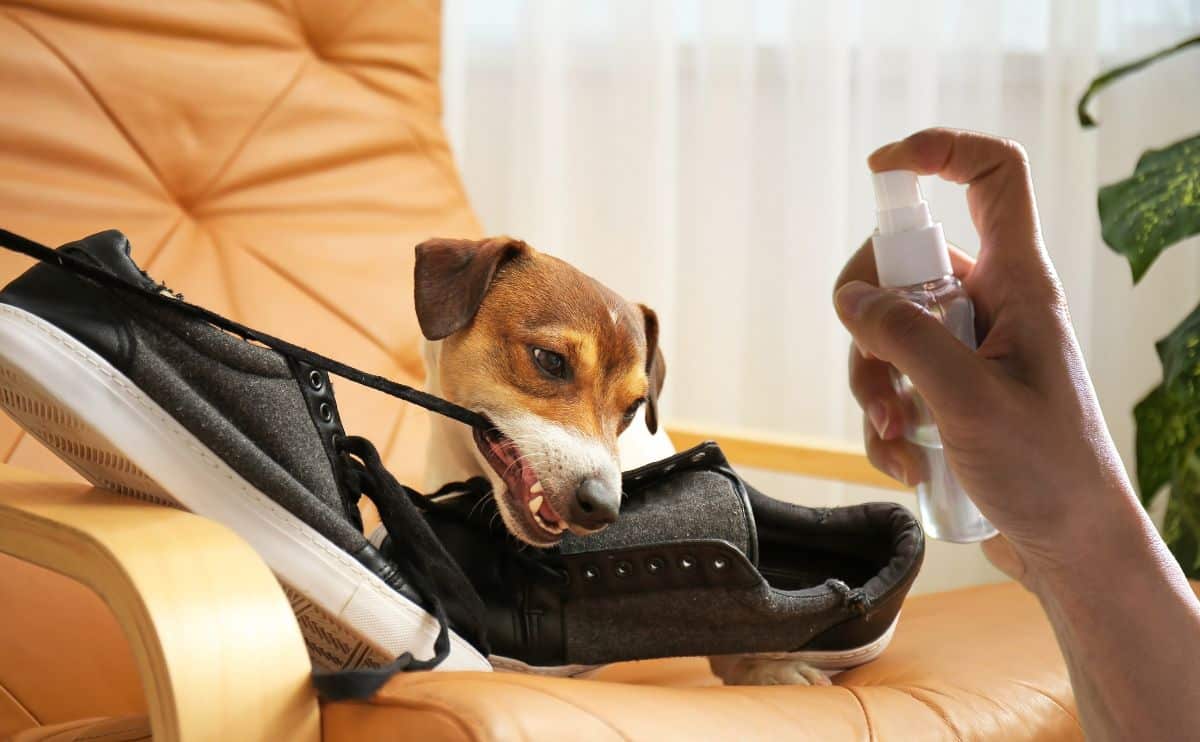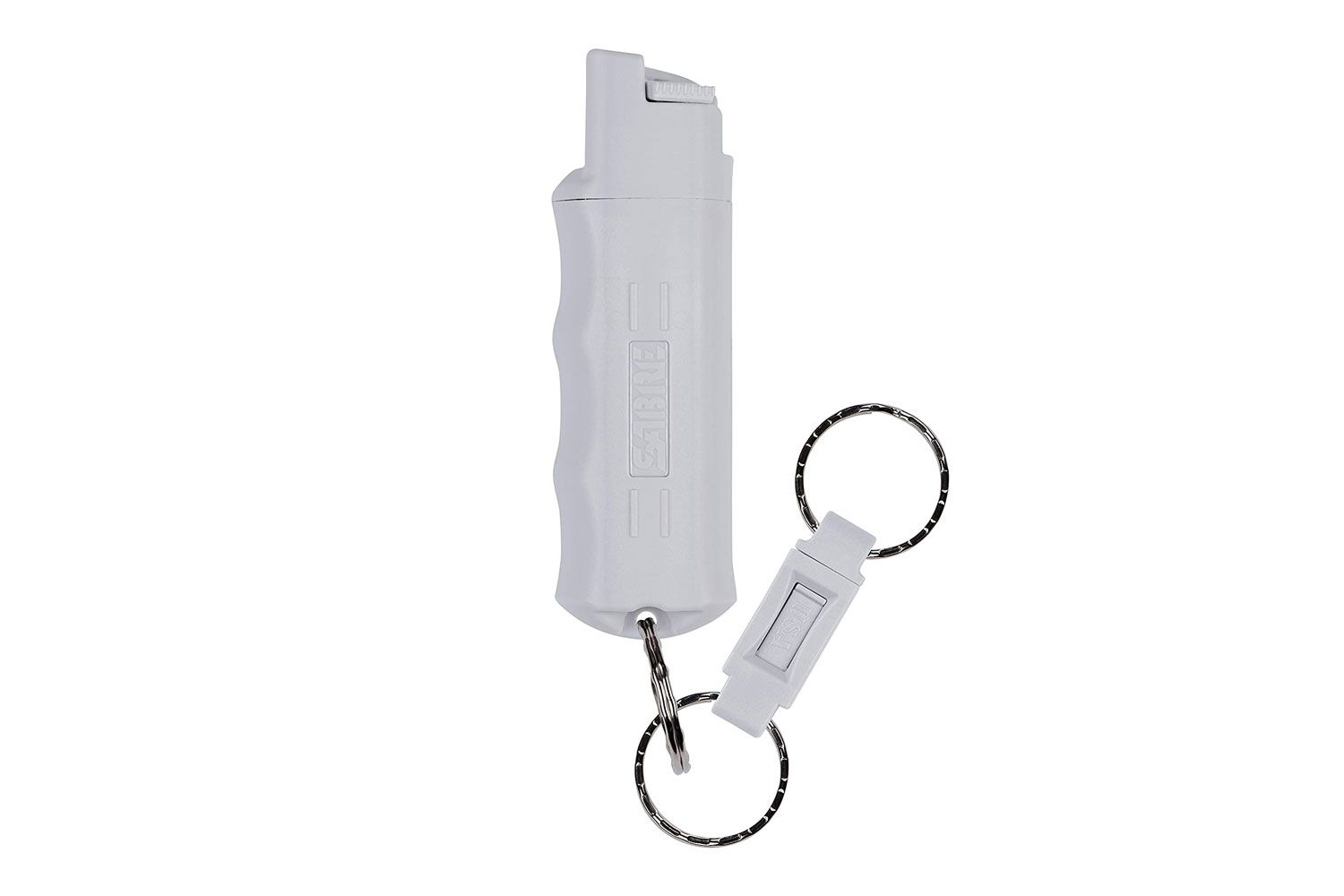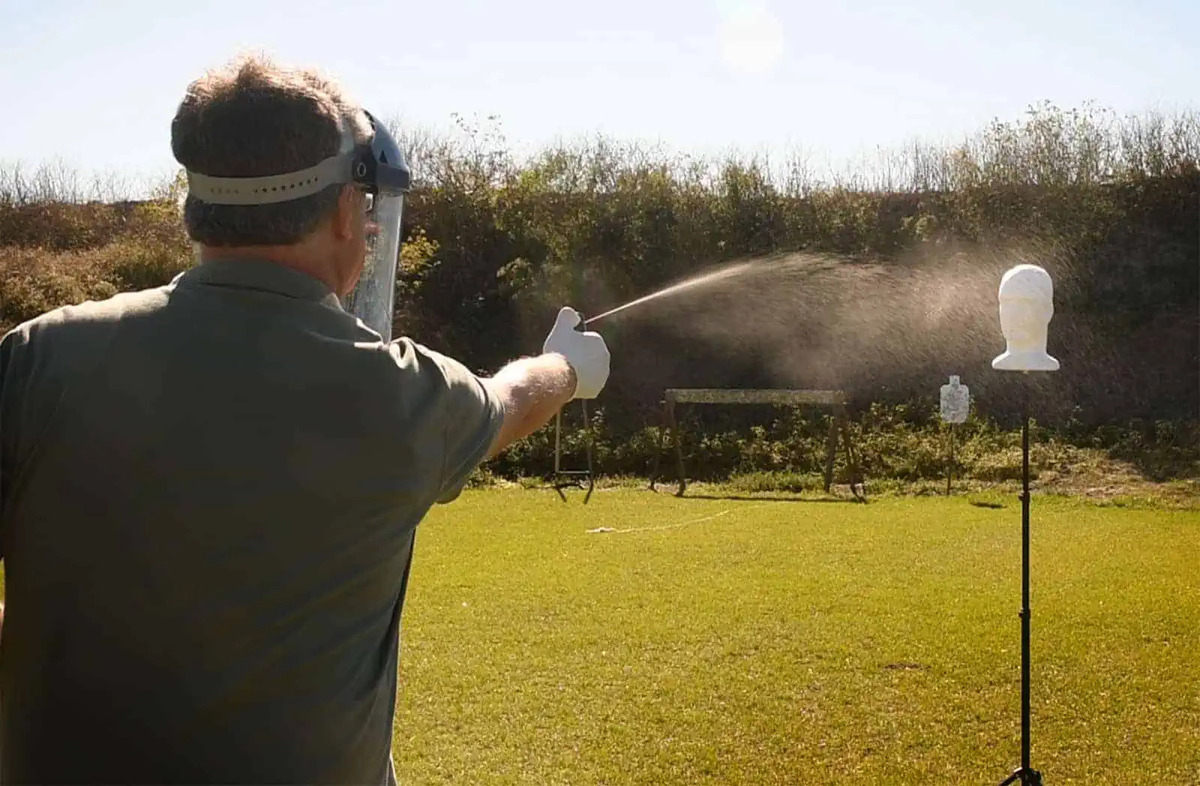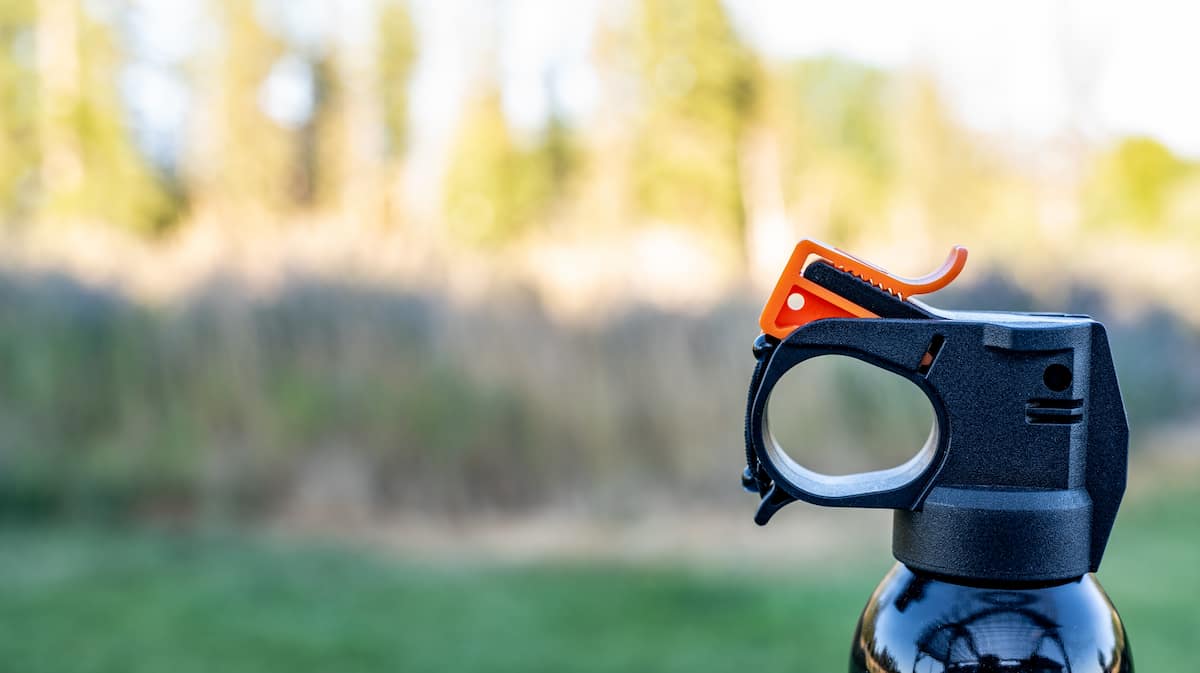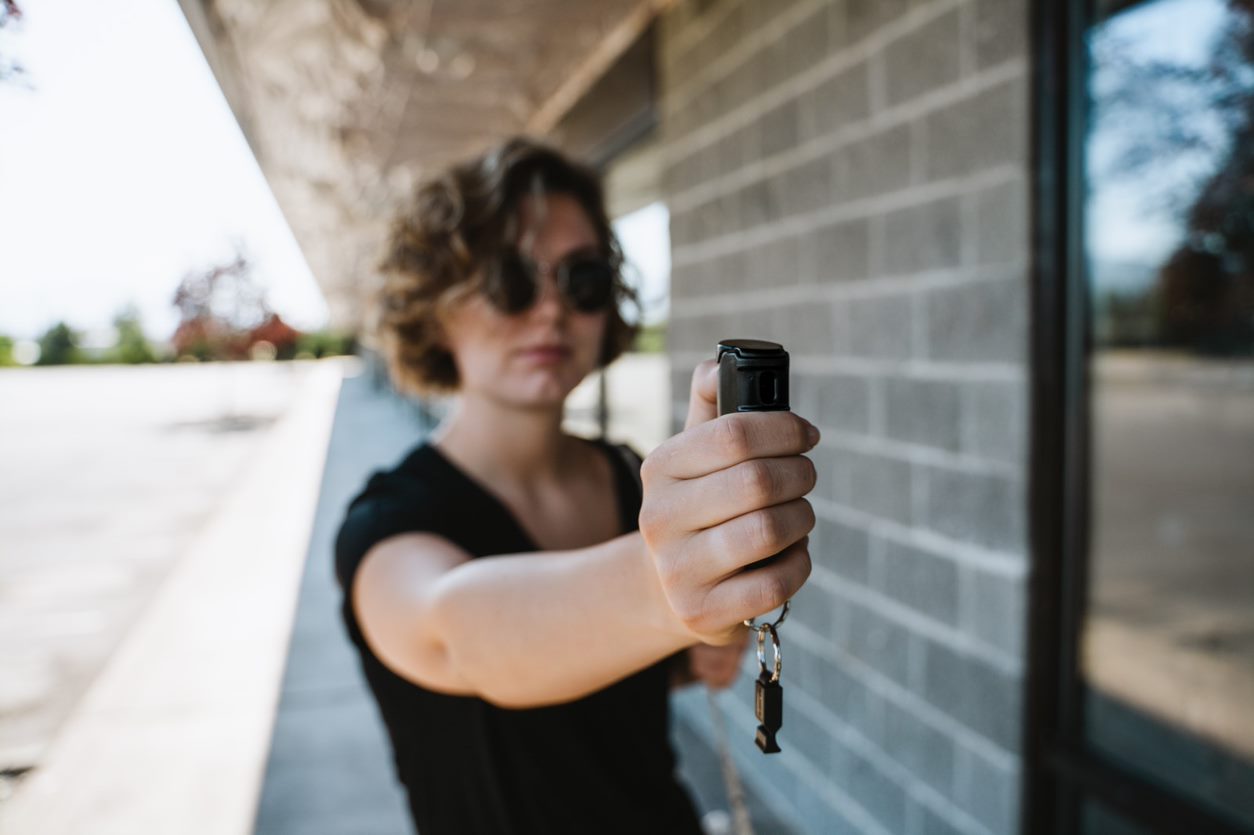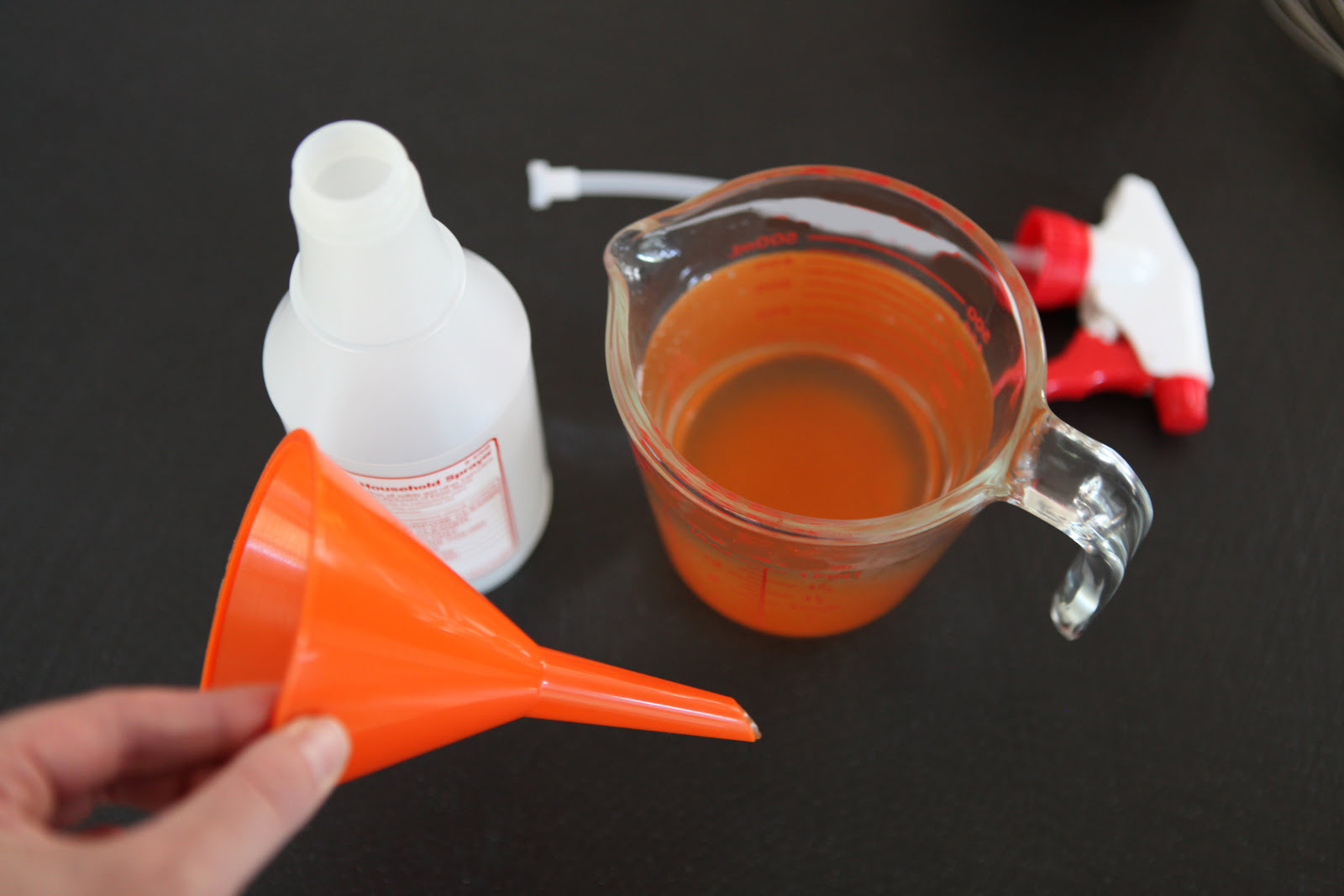Home>Home Security and Surveillance>How To Remove Pepper Spray From Walls
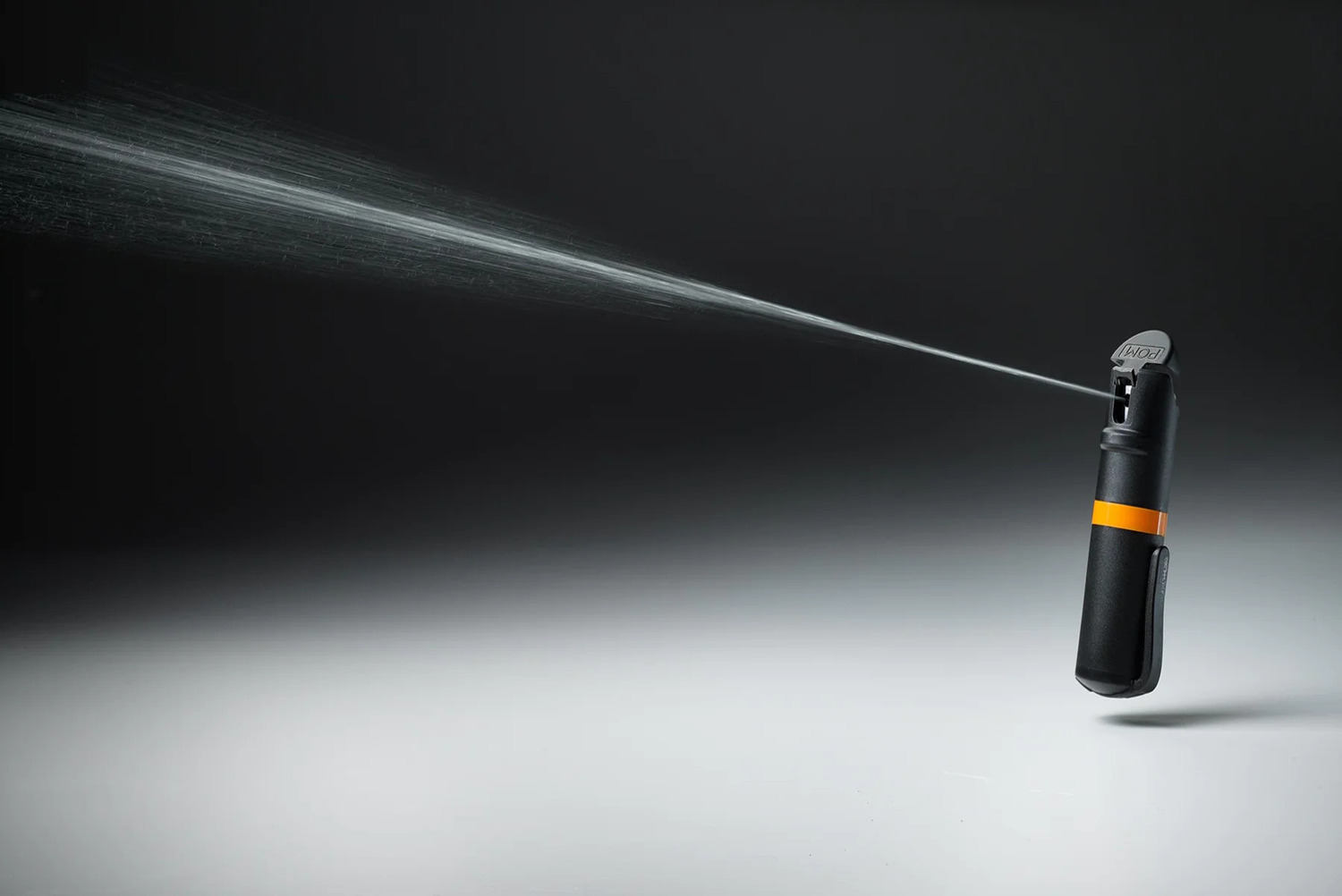

Home Security and Surveillance
How To Remove Pepper Spray From Walls
Modified: May 6, 2024
Learn effective methods for safely removing pepper spray residue from walls in your home. Enhance your home security and surveillance with expert tips and tricks.
(Many of the links in this article redirect to a specific reviewed product. Your purchase of these products through affiliate links helps to generate commission for Storables.com, at no extra cost. Learn more)
Introduction
Welcome to our comprehensive guide on how to remove pepper spray from walls. Whether it’s an accidental discharge or a deliberate act, dealing with pepper spray residue on your walls can be a challenging task. Pepper spray, also known as OC spray (oleoresin capsicum), is a non-lethal self-defense weapon commonly used by law enforcement agencies and individuals for protection. However, when it comes into contact with surfaces such as walls, it can leave behind a stubborn residue that can be difficult to remove.
In this article, we will provide you with step-by-step instructions on how to safely remove pepper spray from your walls. We will also offer tips and precautions to ensure your safety during the cleaning process. So, let’s dive in and learn how to effectively tackle this situation.

Note: Before proceeding with the removal process, it’s crucial to ensure your safety. Make sure to wear protective gloves, safety goggles, and a face mask to prevent any direct contact with the pepper spray residue or inhaling the fumes.
Key Takeaways:
- Safety First!
When removing pepper spray from walls, prioritize safety by wearing protective gear, ventilating the area, and avoiding direct contact with the residue. Take your time and follow the step-by-step process for a clean and safe outcome. - Gentle Cleaning Is Key
Be gentle when removing pepper spray residue from walls to avoid damage. Use soft-bristle brushes and work in small sections for thorough cleaning. Prioritize safety and seek professional help if needed.
Read more: How To Spray Pepper Spray
Understanding Pepper Spray
Before we delve into the methods of removing pepper spray from walls, it’s important to have a basic understanding of what pepper spray is and how it works. Pepper spray is a non-lethal aerosol spray containing a chemical compound called oleoresin capsicum (OC). It is primarily used for self-defense and crowd control.
When pepper spray is sprayed onto a surface, it releases a strong and pungent scent that can cause temporary blindness, inflammation, and severe irritation to the eyes, nose, and skin. The active ingredient in pepper spray, capsaicin, is derived from chili peppers and is responsible for its potent effects.
Pepper spray is commonly used by law enforcement agencies, security personnel, and individuals as a means of protection. It is compact, easy to use, and can incapacitate an attacker temporarily, giving the victim an opportunity to escape and seek help.
However, when pepper spray comes into contact with walls or other surfaces, it can leave behind residue that is not only unsightly but can also cause irritation and discomfort. This residue can be a challenge to remove, requiring the proper techniques and materials.
It’s important to remember that pepper spray residue can remain active for a considerable period, even after it has evaporated. Therefore, it’s crucial to take appropriate precautions when dealing with pepper spray on walls to ensure your safety and prevent any accidental exposure.
In the next sections, we will provide you with step-by-step instructions on how to safely remove the pepper spray residue from your walls. Following these steps carefully will help minimize the risk of further irritation and ensure a clean and safe environment.
Safety Precautions
Before you begin the process of removing pepper spray from your walls, it’s important to take safety precautions to protect yourself and prevent any potential harm. Pepper spray residue can be irritating to the skin, eyes, and respiratory system, so it’s vital to follow these safety guidelines:
- Wear Protective Gear: Put on a pair of disposable gloves, safety goggles, and a face mask to protect your skin, eyes, and respiratory system from direct contact with the pepper spray residue and fumes. This will help minimize the risk of irritation or inhalation.
- Ventilate the Area: Open windows and doors to ensure proper ventilation. This will help dissipate any lingering fumes and provide fresh air circulation during the cleaning process. The fresh air will also help reduce the chances of inhaling any residual pepper spray particles.
- Keep Children and Pets Away: Ensure that children and pets are kept at a safe distance from the affected area. This will prevent accidental contact with the pepper spray residue and avoid any potential harm or irritation.
- Avoid Direct Skin Contact: Refrain from touching your face, eyes, or other sensitive areas while cleaning the pepper spray residue. Even with gloves on, it’s important to avoid any direct contact to minimize the risk of irritation.
- Work in a Well-Lit Area: Ensure that the area you are working in is well-lit to avoid any accidents or mishandling of cleaning materials. Good lighting will help you see any potential hazards and enable you to clean the walls effectively.
- Follow Instructions Carefully: Read and follow all instructions on the cleaning solution or products you are using. Some cleaning agents may have specific safety guidelines or precautions that need to be followed. It’s important to adhere to these instructions for your own safety.
By following these safety precautions, you can minimize the risk of any harm or irritation while removing pepper spray residue from your walls. Remember, safety should always be your top priority throughout the cleaning process. Let’s now move on to the necessary materials needed for the task.
Materials Needed
Before you begin the process of removing pepper spray residue from your walls, gather the following materials for a successful and efficient cleaning:
- Disposable Gloves: Choose a pair of disposable gloves made of nitrile or latex to protect your hands from direct contact with the pepper spray residue and cleaning solution.
- Safety Goggles: Wear safety goggles to shield your eyes from any potential spray or splatters during the cleaning process. This will help prevent any irritation or injury to your eyes.
- Face Mask: Put on a face mask to protect your respiratory system from inhaling any pepper spray particles or fumes. A mask with a high filtration rating, such as an N95 mask, is recommended for optimal protection.
- Bucket of Water: Prepare a bucket of clean water for rinsing the walls after cleaning. This will help remove any leftover residue or cleaning solution. Make sure the water is at room temperature.
- Cleaning Solution: Choose an appropriate cleaning solution that is safe for your walls and capable of breaking down the pepper spray residue. Mild dish soap or a vinegar-water solution (1 part white vinegar to 4 parts water) can be effective options.
- Microfiber Cloth or Sponge: Use a microfiber cloth or sponge to apply the cleaning solution and scrub the walls gently. These materials are non-abrasive and will help minimize the risk of damaging the wall surfaces.
- Soft Bristle Brush: In case the pepper spray residue is stubborn and requires extra scrubbing power, have a soft-bristle brush on hand. Make sure the bristles are gentle to avoid causing any damage to the walls.
- Old Towels or Rags: Keep some old towels or rags nearby to wipe up any excess cleaning solution, water, or residue that may drip or splatter during the cleaning process.
- Ladder or Step Stool: If the affected area is on higher walls or hard-to-reach places, have a secure and stable ladder or step stool available to safely access and clean those areas.
By gathering these materials beforehand, you’ll have everything you need to tackle the pepper spray residue effectively. Now that you’re prepared, let’s move on to the step-by-step process of removing the pepper spray from your walls.
Step 1: Ventilate the Area
The first step in removing pepper spray residue from your walls is to ensure proper ventilation in the affected area. This is essential to dissipate any fumes and provide fresh air circulation during the cleaning process. Follow these steps to effectively ventilate the area:
- Open Windows and Doors: Begin by opening all windows and doors in the room where the pepper spray residue is present. This will allow fresh air to enter and help remove any lingering fumes.
- Use Fans or Air Purifiers: If possible, set up fans or air purifiers in the area to help circulate the air and speed up the ventilation process. Position the fans or air purifiers strategically to ensure adequate airflow throughout the room.
- Direct Airflow Outward: Place fans near windows or doors, facing outward, to create a cross-ventilation effect. This will help push the fumes and airborne particles out of the room more efficiently.
- Avoid Air Recirculation: If your HVAC system has a recirculation mode, turn it off during the cleaning process. This will prevent the system from circulating the contaminated air throughout the house.
- Keep the Area Well-Ventilated: Throughout the cleaning process, ensure that windows and doors remain open to maintain a continuous flow of fresh air. If necessary, use additional fans or ventilation tools to maximize air circulation.
Proper ventilation is crucial in minimizing the inhalation of pepper spray residue and reducing any potential irritation. Ensure that you maintain a well-ventilated environment throughout the entire cleaning process. With the area properly ventilated, it’s time to move on to the next steps of the removal process.
Read more: What Pepper Is Used In Pepper Spray
Step 2: Protect Yourself
Before you begin working on removing the pepper spray residue from your walls, it’s essential to take the necessary precautions to protect yourself from any potential harm or irritation. Follow these steps to ensure your safety during the cleaning process:
- Wear Protective Gear: Put on a pair of disposable gloves made of nitrile or latex to protect your hands from direct contact with the pepper spray residue and cleaning solutions. Ensure that the gloves fit properly to provide optimal protection.
- Use Safety Goggles: Wear safety goggles to shield your eyes from any potential spray or splatters during the cleaning process. This will protect your eyes from irritation or injury caused by the pepper spray residue or cleaning solutions.
- Put on a Face Mask: Wear a face mask to protect your respiratory system from inhaling any pepper spray particles or fumes. Choose a mask with a high filtration rating, such as an N95 mask, for optimal protection.
- Wear Protective Clothing: Consider wearing long sleeves and pants to protect your skin from accidental contact with the pepper spray residue. Avoid wearing any clothing that may absorb the residue or hinder your ability to move comfortably.
- Work in a Well-Lit Area: Ensure that the area you are working in is well-lit to avoid any accidents or mishandling of cleaning materials. Good lighting will help you see any potential hazards and enable you to clean the walls effectively.
Taking these precautionary measures will minimize the risk of any harm, irritation, or inhalation of the pepper spray residue or fumes. Additionally, it’s important to remember not to touch your face, eyes, or other sensitive areas while cleaning, even with gloves on. By protecting yourself, you can confidently proceed to the next steps of the removal process knowing that you are taking the necessary steps to ensure your safety.
Step 3: Remove Excess Spray
Before you start cleaning the pepper spray residue from your walls, it’s important to remove any excess spray that may be present. By removing the bulk of the residue, you’ll make the cleaning process more manageable and effective. Follow these steps to remove the excess pepper spray:
- Gently Blot the Area: Begin by using a clean cloth or paper towel to gently blot the affected area. Do not rub the residue, as it may spread and make the cleaning process more difficult.
- Use a Dry Cloth: Switch to a fresh, dry cloth or paper towel and continue blotting the area to absorb as much excess pepper spray as possible. Repeat this process until no more residue transfers onto the cloth.
- Be Gentle: Avoid applying excess pressure or scrubbing the area at this stage, as it may push the residue deeper into the walls or cause it to spread to surrounding areas.
- Dispose of Contaminated Materials: Dispose of the cloth or paper towel used to blot the excess spray in a sealed plastic bag and discard it properly. This will prevent accidental contact with the residue.
By removing the excess pepper spray before starting the cleaning process, you’ll ensure that the remaining residue is concentrated and easier to clean. It’s important to be gentle and cautious during this step to prevent further spreading or smearing of the residue. With the excess spray removed, you’re ready to proceed with the next steps of removing the pepper spray residue from your walls.
Mix a solution of equal parts water and vinegar. Use a sponge or cloth to gently scrub the pepper spray from the walls. Rinse with clean water and dry with a towel.
Step 4: Prepare Cleaning Solution
Once you have removed the excess pepper spray residue from your walls, it’s time to prepare a cleaning solution to break down the remaining residue. The right cleaning solution will help effectively remove the pepper spray and restore your walls to their original condition. Follow these steps to prepare a suitable cleaning solution:
- Mild Dish Soap: Fill a bucket or container with warm water, and add a small amount of mild dish soap. Use a ratio of approximately 1 tablespoon of dish soap for every gallon of water. Stir well to create a soapy solution.
- Vinegar-Water Solution: Alternatively, you can mix a solution of 1 part white vinegar to 4 parts water. Vinegar has natural cleaning properties that can help break down the pepper spray residue effectively. Combine the vinegar and water in a bucket and mix well.
- Test the Solution: Before using the cleaning solution on a wider area, test it on a small, inconspicuous section of the wall. This will help ensure that the solution does not cause any damage or discoloration to the wall surface. If there are no adverse effects, you can proceed with using the solution on the rest of the affected areas.
Both the mild dish soap solution and vinegar-water solution are effective options for removing pepper spray residue. The choice depends on your personal preference and the materials used in your wall surfaces. Remember to mix the solutions well and perform a patch test before applying them to the entire affected area.
With the cleaning solution prepared, you’re now ready to move on to the next step of applying it to the walls and removing the pepper spray residue effectively.
Step 5: Apply Cleaning Solution
Now that you have prepared the cleaning solution for removing pepper spray residue from your walls, it’s time to apply it to the affected areas. By using the cleaning solution, you’ll break down the remaining residue and prepare the walls for thorough cleaning. Follow these steps to apply the cleaning solution:
- Dampen a Cloth or Sponge: Dip a clean, microfiber cloth or sponge into the cleaning solution. Make sure the cloth or sponge is damp and not dripping with excess solution.
- Wring Out Excess Solution: Before applying the damp cloth or sponge to the walls, lightly squeeze or wring out any excess cleaning solution. This will prevent the solution from dripping onto the floor or causing unnecessary moisture on the walls.
- Start from the Top: Begin applying the cleaning solution to the walls from the top and work your way down. This will prevent the solution from running down the wall and causing streaks or uneven cleaning.
- Apply in Small Sections: Work on small sections of the wall at a time. With the damp cloth or sponge, gently scrub the pepper spray residue in a circular motion. Apply even pressure, but avoid scrubbing too vigorously to prevent damaging the wall surface.
- Reapply Solution as Needed: Depending on the extent of the residue, you may need to reapply the cleaning solution to the cloth or sponge periodically. Ensure that the cloth or sponge remains damp throughout the cleaning process.
By applying the cleaning solution in a systematic manner and working on small sections at a time, you’ll have better control over the cleaning process. Remember to be gentle yet thorough when scrubbing the residue to avoid damaging the walls. Once you have applied the cleaning solution, it’s time to move on to the next step of scrubbing the walls to remove the pepper spray residue completely.
Read more: How To Store Pepper Spray
Step 6: Scrub the Walls
After applying the cleaning solution to the walls, it’s time to scrub away the pepper spray residue. This step will help loosen and remove the remaining residue, leaving your walls clean and free from any traces of pepper spray. Follow these steps to effectively scrub the walls:
- Use a Soft-Bristle Brush: If the pepper spray residue is particularly stubborn or has dried onto the walls, use a soft-bristle brush to gently scrub the affected areas. Ensure that the bristles are gentle to prevent any scratches or damage to the wall surface.
- Work in Circular Motions: Dip the soft-bristle brush into the cleaning solution and use it to scrub the walls in circular motions. Apply consistent and even pressure, focusing on the areas with the most residue. Be careful not to apply excessive force that could damage the wall.
- Pay Attention to Corners and Edges: Pay special attention to corners, edges, and seams where the pepper spray residue may have accumulated. Use the brush or a cloth to reach these tight spaces and ensure thorough cleaning.
- Reapply Solution as Needed: Depending on the severity of the residue, you may need to reapply the cleaning solution to the brush or cloth as you proceed. This will help maintain the effectiveness of the solution and aid in the removal of the residue.
- Work in Sections: Divide the affected wall area into manageable sections and focus on scrubbing one section at a time. This will ensure thorough cleaning and prevent the solution from drying on the walls before you can clean it off.
Remember to take your time and be patient as you scrub the walls. It may take a bit of effort to fully remove the pepper spray residue, especially if it has been sitting on the walls for some time. Take breaks as needed and assess your progress to determine if any areas require additional attention.
Once you have thoroughly scrubbed the walls and removed the residue, it’s time to move on to the next step of rinsing the walls with water.
Step 7: Rinse with Water
After successfully scrubbing the walls to remove the pepper spray residue, it’s important to rinse them with water to remove any remaining cleaning solution and residue. Rinsing will leave your walls clean and ready for drying. Follow these steps to effectively rinse the walls:
- Prepare a Bucket of Clean Water: Fill a bucket with clean, room temperature water. Ensure that the water is not too hot or too cold, as extreme temperatures can potentially damage the walls.
- Soak a Clean Cloth or Sponge: Dip a clean cloth or sponge into the bucket of water and allow it to soak for a moment. Wring out any excess water, ensuring that the cloth or sponge is damp but not dripping.
- Wipe the Walls: Starting from the top, gently wipe the walls with the damp cloth or sponge. Use smooth, sweeping motions to remove any remaining residue or cleaning solution. Be thorough and pay attention to all areas of the walls.
- Change the water as needed: If the water in the bucket becomes dirty or soapy, replace it with fresh water to ensure effective rinsing.
- Dry the Walls: Once you have finished rinsing, use a clean towel or cloth to gently pat the walls dry. This will remove any excess water and prevent water spots or streaks from forming.
Rinsing the walls with water is crucial to remove any traces of cleaning solution and ensure a clean finish. Take your time during this step to ensure thorough rinsing of all areas. Once you have completed the rinsing process, the final step is to dry the walls thoroughly.
Step 8: Dry the Walls
The final step in removing pepper spray residue from your walls is to ensure they are thoroughly dried. Proper drying will prevent any moisture-related issues and help restore the appearance of your walls. Follow these steps to effectively dry the walls:
- Use a Dry Towel or Cloth: Take a clean, dry towel or cloth and gently pat the walls to absorb any remaining moisture. Start from the top and work your way down, ensuring that all areas are given proper attention.
- Check for Damp Areas: While drying, pay attention to any areas that feel damp or wet. Focus on these areas to ensure they are completely dried. Moisture can lead to mold or mildew growth if left unattended.
- Utilize Air Circulation: Open windows and doors to increase air circulation in the room. This will help expedite the drying process by allowing fresh air to flow and moisture to evaporate more quickly.
- Use Fans or Dehumidifiers: Consider using fans or dehumidifiers to further facilitate the drying process. Position them strategically to move air around and remove excess moisture from the room.
- Allow Sufficient Time to Dry: Depending on the humidity levels and airflow in the room, it may take several hours or even a full day for the walls to completely dry. Be patient and allow sufficient time for the drying process to occur naturally.
It’s important to ensure that the walls are thoroughly dry to prevent any potential issues such as mold growth or damage to the wall surfaces. Taking the time to properly dry the walls will ensure a clean and restored appearance.
Congratulations! You have successfully completed the process of removing pepper spray residue from your walls. By following these steps, your walls should now be clean and free from any traces of pepper spray. Remember, safety precautions and proper ventilation are vital throughout the entire process. It’s always a good idea to consult professionals if you are uncertain or dealing with extensive damage to your walls.
Additional Tips and Considerations
As you navigate the process of removing pepper spray residue from your walls, here are some additional tips and considerations to keep in mind:
- Test Cleaning Solutions: Before applying any cleaning solution to a larger area, always test it on a small, inconspicuous spot to ensure it doesn’t cause any damage or discoloration.
- Work in Small Sections: Breaking down the cleaning process into smaller sections will help you focus on one area at a time, ensuring thorough cleaning and making the task more manageable.
- Be Gentle: When scrubbing the walls, use gentle pressure and avoid using abrasive materials that could scratch or damage the wall surfaces.
- Protect Other Surfaces: If there are nearby surfaces or objects that might be sensitive to the cleaning solution, such as wood or painted surfaces, cover or protect them to prevent any potential damage.
- Dispose of Materials Properly: After completing the cleaning process, ensure that any used cloths, sponges, or other materials that have come into contact with pepper spray residue are disposed of properly to avoid accidental exposure.
- Consider Professional Help: If the pepper spray residue has caused significant damage or staining to your walls, it may be best to seek the assistance of professional cleaners who have experience handling such situations.
- Keep Safety a Priority: Throughout the entire process, prioritize your safety by wearing protective gear and ensuring proper ventilation. Avoid directly touching your face or eyes to prevent any accidental exposure.
- Consult Manufacturer’s Recommendations: If your walls have a specific type of finish or material, refer to the manufacturer’s recommendations for cleaning to ensure you are using the most suitable methods and solutions.
Following these additional tips and considerations will help you navigate the process more effectively and achieve the best possible results. Remember, every situation may vary, so it’s important to assess your specific circumstances and adjust the cleaning process accordingly.
With careful attention to detail and a commitment to safety, you’ll be able to successfully remove pepper spray residue from your walls and restore their original appearance. Good luck!
Read more: What Is Pepper Spray
Conclusion
Removing pepper spray residue from your walls may seem like a daunting task, but with the right approach and precautions, it can be accomplished effectively. By following the step-by-step instructions provided in this guide, you can restore your walls to their original condition and eliminate any traces of pepper spray.
Throughout the process, it’s crucial to prioritize your safety by wearing protective gear, ventilating the area, and avoiding direct contact with the residue or cleaning solutions. Take the time to gather the necessary materials, prepare the appropriate cleaning solution, and work in a systematic manner to ensure thorough cleaning.
Remember to be gentle when scrubbing the walls to avoid causing any damage or spreading the residue further. The use of soft-bristle brushes, along with proper technique, will help dislodge the residue effectively.
To ensure a clean and pristine finish, thoroughly rinse the walls with water to remove any remaining cleaning solution. Then, take the time to properly dry the walls to prevent any moisture-related issues and restore their original appearance.
As with any cleaning task, it’s important to consider your specific circumstances and adapt the process accordingly. If you encounter stubborn residue or are unsure about how to proceed, seek professional assistance to ensure the best outcome.
With diligence and attention to detail, you can successfully remove pepper spray residue from your walls and create a safe and comfortable environment. Remember, safety should always be a top priority, and if in doubt, don’t hesitate to consult with experts in the field.
Now armed with the knowledge and guidelines provided in this guide, you are ready to tackle the task of removing pepper spray residue from your walls with confidence. Enjoy the satisfaction of a clean and restored living space, free from the lingering effects of pepper spray.
Now that you've mastered removing pepper spray from walls, why not tackle other areas of your home? Dive into our guide on thorough fridge cleaning methods, where you'll discover how to keep your fridge spotless and smelling fresh. Or, if you're looking to keep your entire home in top shape, check out our comprehensive guide on essential home upkeep strategies. Both articles are packed with practical advice to help you maintain a clean and well-kept home.
Frequently Asked Questions about How To Remove Pepper Spray From Walls
Was this page helpful?
At Storables.com, we guarantee accurate and reliable information. Our content, validated by Expert Board Contributors, is crafted following stringent Editorial Policies. We're committed to providing you with well-researched, expert-backed insights for all your informational needs.
